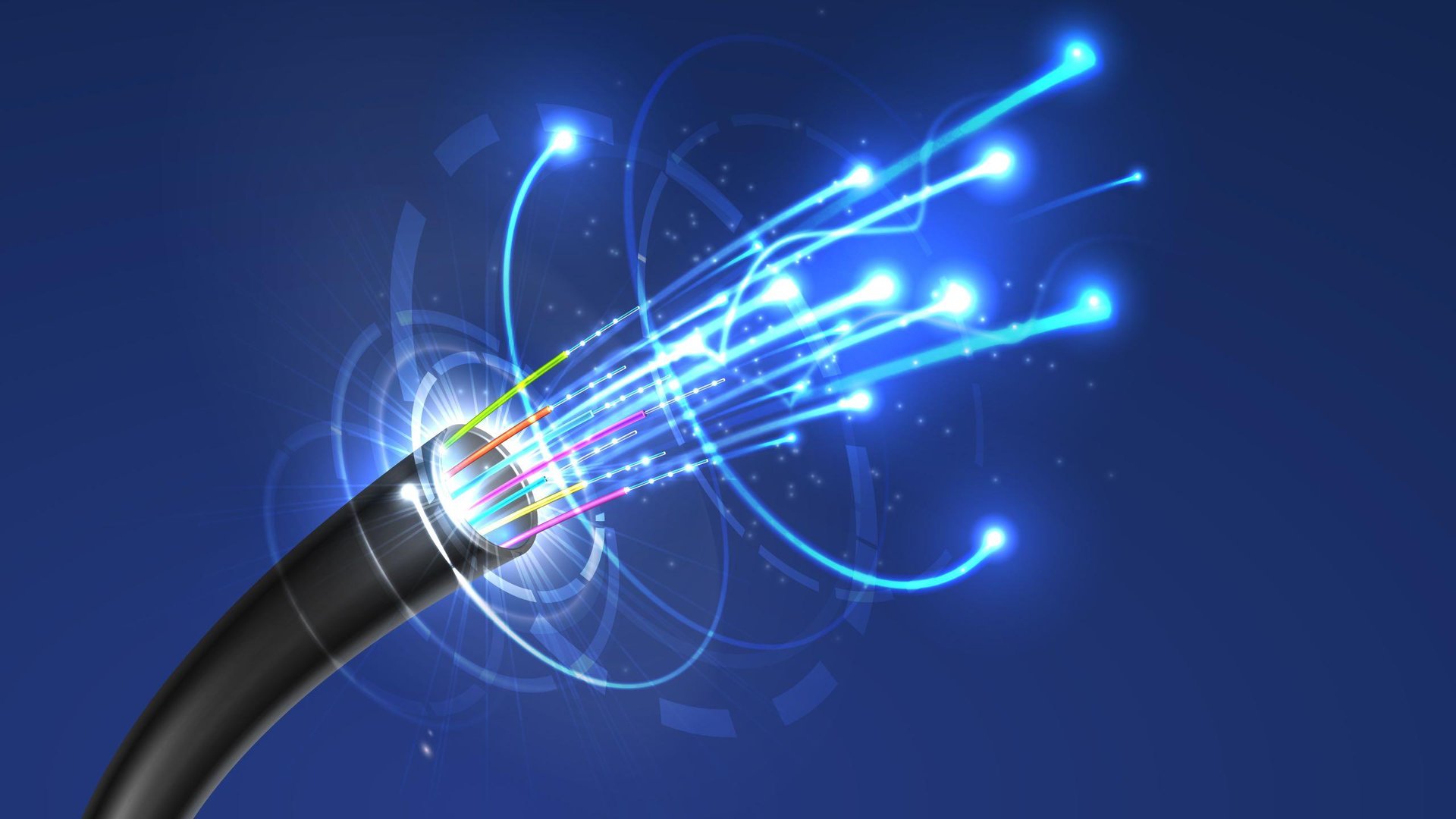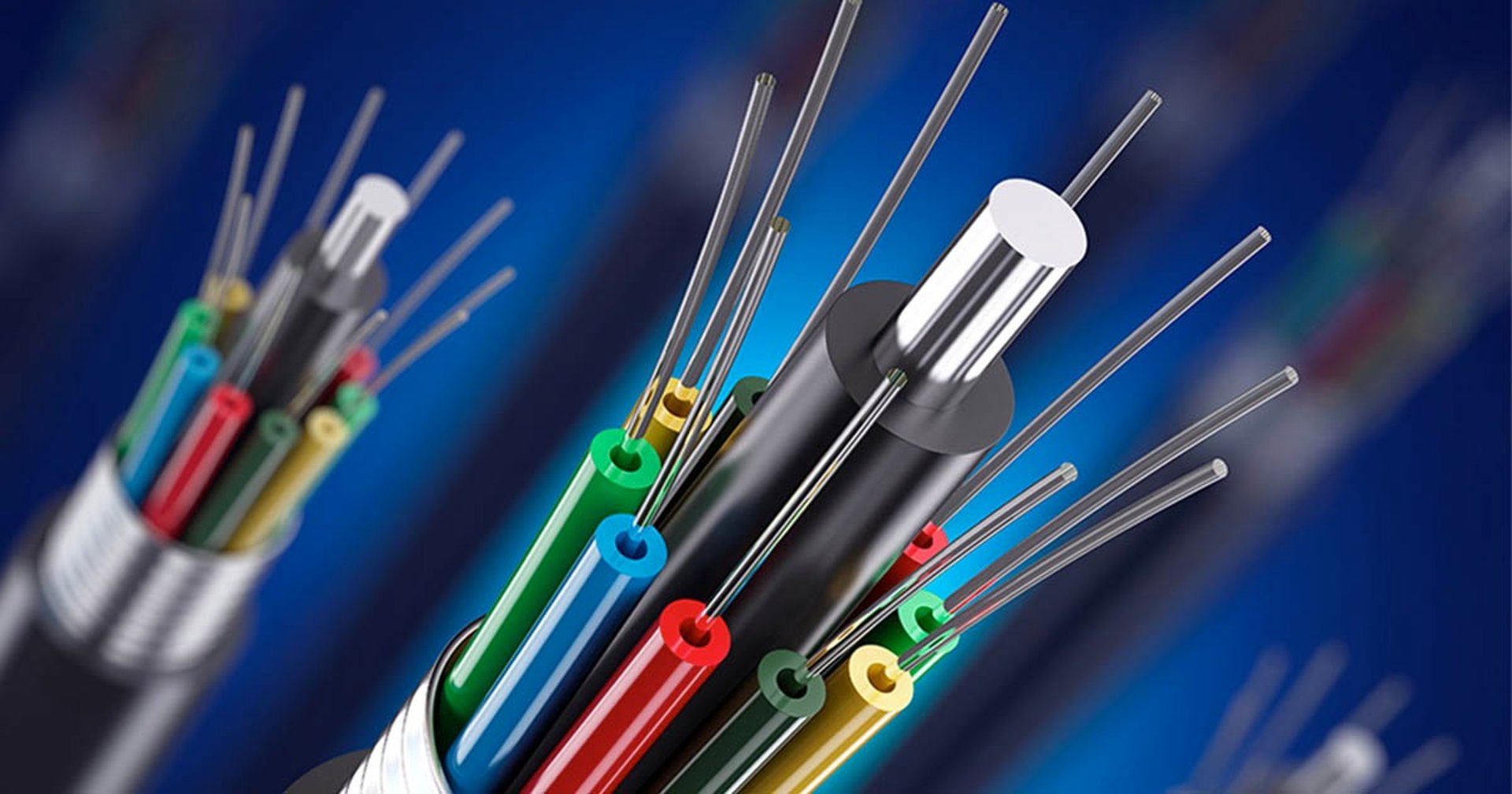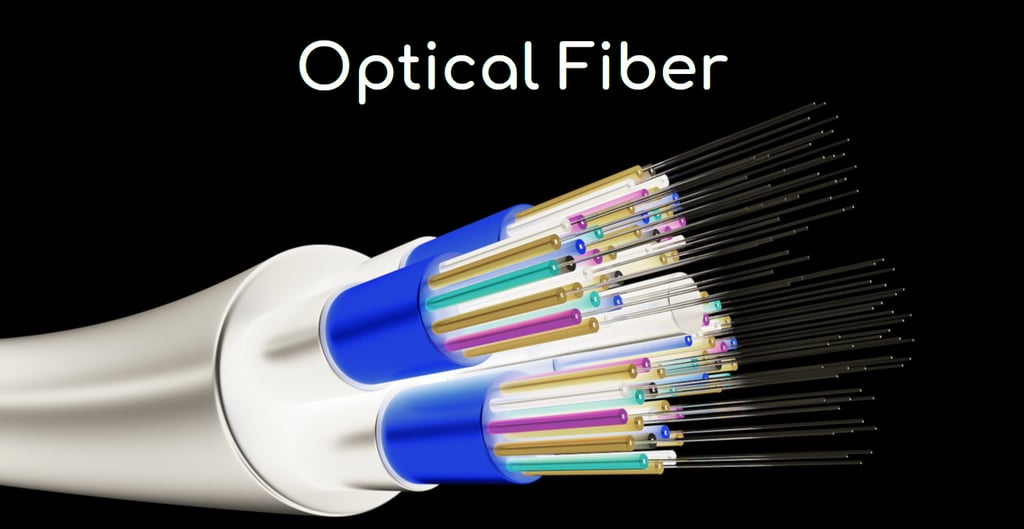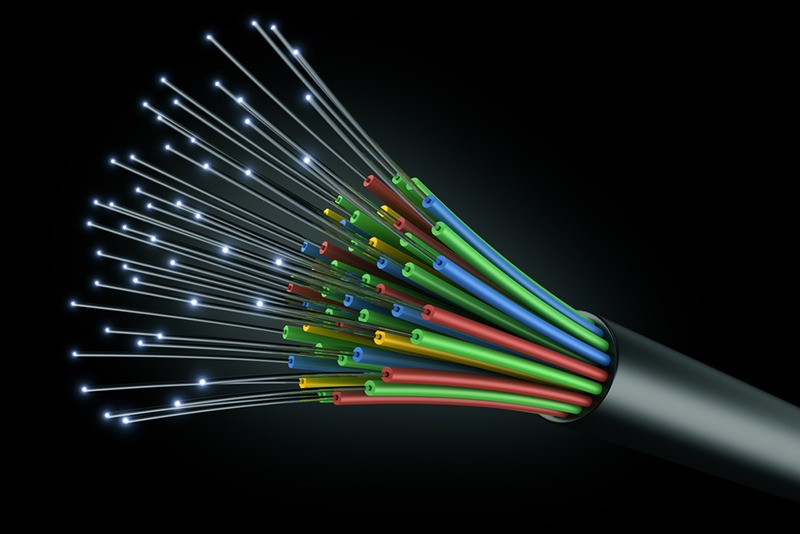Anhui Feichun Special Cable Co.,Ltd Li.wang@feichuncables.com

How Do Fibre Optic Cables Revolutionise Communication in South Africa?
Discover the intricacies of fibre optic cables, including their types, working principles, advantages, and diverse applications in telecommunications, high-speed internet, and beyond. This comprehensive guide explores how fibre optic technology drives South Africa's digital connectivity, from urban hubs to rural areas, with in-depth analysis and FAQs on fibre optic cables, bandwidth, EMI immunity, and installation processes.
Li.Wang
10/13/20257 min read



Introduction to Fibre Optic Cable
Imagine sitting in a bustling Johannesburg café, streaming a live rugby match without a hitch, or a farmer in rural Limpopo accessing real-time market data to sell crops efficiently. These everyday scenarios are made possible by the invisible heroes beneath our feet and overhead: fibre optic cables. In a country like South Africa, where load-shedding can disrupt power supplies, the reliability of fibre optic networks ensures seamless video calls and data transfers during those precious grid-stable moments. As we navigate an increasingly data-driven world, understanding fibre optic cables becomes essential—not just for tech enthusiasts, but for anyone relying on modern communication.
Fibre optic cables are sophisticated network cables composed of thin strands of glass or plastic fibres, encased in protective insulation. Unlike traditional copper wires that transmit data via electrical signals, these cables use pulses of light to carry information at incredible speeds. This light-based transmission allows for faster, more reliable communication over vast distances, making fibre optics the backbone of global and local connectivity. In South Africa, fibre optic infrastructure has exploded in recent years, with initiatives like the National Broadband Policy aiming to bridge the digital divide by connecting underserved areas to high-speed internet.
The importance of fibre optic cables in modern life cannot be overstated. They support a wide array of applications, from high-performance data networking to telecommunications and internet services. Globally, much of the world's internet backbone, cable television, and telephone systems rely on fibre optics. Locally, in South Africa, these cables enable everything from e-learning in schools across KwaZulu-Natal to telemedicine in remote clinics, ensuring that even during economic challenges, information flows freely. For instance, projects like the Square Kilometre Array (SKA) telescope in the Northern Cape depend on fibre optics to handle massive data volumes from astronomical observations, linking South Africa to international scientific collaborations.
Key characteristics set fibre optic cables apart. They offer exceptionally high bandwidth, ranging from 100 Mbps to 2 Gbps, thanks to light's higher frequency compared to electrical signals. This means they can handle enormous data loads without compromising speed. Unlike copper cables, their performance isn't limited by length; instead, the number of nodes they support depends on connected hubs. Fibre optics are immune to electromagnetic interference (EMI), making them ideal for high-voltage environments like industrial sites or near power lines—crucial in a nation prone to electrical fluctuations. Additionally, they boast a longer lifespan than twisted-pair or coaxial cables, often enduring decades with minimal degradation.
This article delves deeply into the world of fibre optic cables, providing a logical progression through their mechanics, classifications, benefits, real-world applications, installation challenges, and common queries. By the end, you'll appreciate how these "luminous threads" are transforming South Africa's digital landscape, from powering smart cities in Cape Town to enhancing connectivity in mining towns.
How Fibre Optic Cables Work
At the heart of fibre optic technology lies a deceptively simple yet profoundly efficient design. A typical fibre optic cable consists of one or more strands, each slightly thicker than a human hair. The core component is the central pathway where light travels. Surrounding the core is the cladding, a layer of glass with a lower refractive index that reflects light back into the core, preventing signal loss. Beyond that, a buffer coating provides mechanical protection, absorbing shocks and bends, while an outer protective jacket shields the entire assembly from environmental hazards like moisture or physical damage.
The science behind fibre optic cables is rooted in physics, specifically the principle of total internal reflection. Data is encoded into light pulses—generated by lasers or light-emitting diodes (LEDs)—and sent through the core. As the light encounters the boundary between the core and cladding, it reflects inward at an angle, bouncing along the fibre even through curves and twists. This allows the signal to travel long distances with minimal attenuation, or loss of strength. For context, while copper wires suffer from resistance and signal degradation over a few kilometres, fibre optics can span tens or hundreds of kilometres without amplifiers.
Differentiating light sources is key to understanding variations in performance. Single-mode fibres typically use lasers, which produce a narrow, coherent beam ideal for precise, long-distance transmission. In contrast, multi-mode fibres employ LEDs, which emit broader light rays capable of carrying multiple signals simultaneously but over shorter ranges. This distinction affects everything from bandwidth to cost, as lasers are more expensive but enable higher data integrity.
In practical terms, when you send an email from Durban to Pretoria, the message is converted into binary code, modulated onto light pulses, and zipped through underground or aerial fibres. At the receiving end, photodetectors convert the light back into electrical signals for your device. This process happens in milliseconds, underscoring why fibre optics are indispensable for real-time applications like online gaming or stock trading in South Africa's financial hubs.
Types of Fibre Optic Cables
Fibre optic cables are not one-size-fits-all; they are classified based on refractive index, materials, and mode of light propagation, each tailored to specific needs.
Starting with refractive index, step-index fibres feature a uniform refractive index in the core, surrounded by cladding with a sharp drop in index. This design is straightforward but can lead to signal dispersion over long distances. Graded-index fibres, however, have a refractive index that gradually decreases from the core's centre outward, minimising dispersion by guiding light rays along parabolic paths. These are preferred for applications requiring high data rates over moderate distances.
Material-wise, glass fibres dominate for high-performance scenarios, using ultra-fine silica glass for exceptional clarity and low loss. Plastic optical fibres (POF), made from materials like poly(methyl methacrylate) (PMMA), are cheaper and more flexible but suited for shorter runs, such as in-home networking or automotive systems.
The most prominent classification is by propagation mode. Single-mode fibres have a thin core (about 9 micrometres), allowing only one light path, which reduces dispersion and enables transmission over vast distances—up to 100 kilometres or more without repeaters. They're the choice for long-haul telecommunications, like undersea cables connecting South Africa to Europe via the SEACOM or WACS systems. Multi-mode fibres, with cores of 50-62.5 micrometres, support multiple light paths, offering higher bandwidth for short distances (up to 2 kilometres) but suffering from modal dispersion. Ideal for local area networks (LANs) in data centres or office buildings in Gauteng.
Beyond these, configurations include simplex (one-way transmission), duplex (two-way, like phone lines), ribbon (multiple fibres in a flat array for high-density connections), and armoured cables (reinforced for harsh environments, such as underground mining in Rustenburg). Each type addresses unique challenges, ensuring versatility across industries.
Advantages of Fibre Optic Cables
The shift from copper to fibre optics isn't just a trend; it's driven by tangible advantages that make fibre the superior choice for modern infrastructure.
Firstly, fibre cables are thinner and lighter, with diameters smaller than copper equivalents. This allows for bundling more fibres into a single cable, increasing carrying capacity—think more phone lines or TV channels per conduit. In tight urban spaces like Johannesburg's high-rises, this space efficiency is invaluable.
Signal degradation is another area where fibre excels. Copper signals weaken over distance due to resistance, but fibre's light-based transmission experiences far less loss, maintaining integrity over long hauls. Coupled with high bandwidth and speeds, fibre can transfer massive data volumes—gigabits per second—far surpassing copper's limits.
Cost-effectiveness emerges over time. While initial setup might be pricier, producing long fibre lengths is cheaper than copper, and lower maintenance needs (no corrosion) add savings. Fibre's immunity to EMI means no interference from nearby power lines or storms, ensuring clearer signals for calls or broadcasts.
Durability is key: with proper care, fibres last 20-25 years, outpacing copper's 5-10 years. In South Africa's variable climate, this resilience reduces downtime and repair costs.
Use Cases and Applications
Fibre optic cables' versatility spans sectors, transforming how we connect and operate.
In data networking, they link computers within buildings or across campuses, enabling fast, reliable LANs. South African universities like Wits rely on this for collaborative research.
Telecommunications benefit immensely; fibres handle thousands of calls simultaneously via light pulses, outperforming coaxial cables. In rural Eastern Cape, this means better voice services without dropouts.
High-speed internet is perhaps the most visible use. Fibre's flexibility and capacity deliver broadband to homes, supporting streaming and remote work—vital during South Africa's COVID-19 lockdowns.
Military and aerospace applications prioritise security; fibre's low interception risk suits defence, like in South African National Defence Force operations.
Medically, ultra-thin fibres enable endoscopes for non-invasive views of lungs or vessels, revolutionising diagnostics in hospitals like Groote Schuur.
Industrially, fibres image inaccessible areas, sense temperature/pressure in mines, and support broadcast for HDTV. In South Africa's mining sector, they enhance safety monitoring underground.
Diagram of fibre optic cable installation, including aerial and underground methods.
Installation and Practical Considerations
Installing fibre optic cables is a meticulous process. It begins with planning: surveying routes, obtaining permits, and designing for minimal disruption. Trenching follows—digging pathways on land or laying subsea cables via specialised ships.
Cable placement involves pulling or blowing fibres through conduits, with splicing to connect segments. Testing ensures signal quality using optical time-domain reflectometers.
Challenges include labour intensity and costs, but the payoff is robust infrastructure. Environmentally, fibres withstand water but require gel-filled or armoured designs for prolonged exposure, relevant in flood-prone areas like KwaZulu-Natal.
In South Africa, installations often integrate with existing utilities, accelerating rollout in metros while challenging rural expansions.
Frequently Asked Questions (FAQs)
Q: What exactly is a fibre optic cable?
A: A fibre optic cable is a network cable comprising glass fibres in an insulated casing, transmitting data as light pulses for high-speed, long-distance applications like internet and telecom.
Q: Why do we use fibre optic cables?
A: They provide unmatched speed, reliability, and bandwidth, outperforming copper in data volume, distance, and EMI resistance for telecom, internet, and TV.
Q: What's the difference between single-mode and multi-mode fibre optic cables?
A: Single-mode transmits one signal over long distances for telecom; multi-mode handles multiple signals over short distances for local networks.
Q: Are fibre optic cables expensive?
A: Initial costs are high, but long-term savings from performance and durability make them cost-effective.
Q: What's the lifespan of fibre optic cables?
A: Typically 20-25 years with proper installation and maintenance.
Q: How are fibre optic cables installed?
A: Through planning, trenching, laying, splicing, and testing to create durable networks.
Q: Can fibre optic cables get wet?
A: Yes, designed for environmental exposure, but prolonged water can damage unprotected cables.
Conclusion
Fibre optic cables stand as the transformative backbone of modern communication, enabling everything from daily internet browsing to cutting-edge industries. In South Africa, they promise a brighter digital future, connecting diverse communities and driving economic growth. As we embrace this technology, let's appreciate these luminous threads weaving our connected world.



Email Address: Li.wang@feichuncables.com
© 2025. All rights reserved.


One-click to Quickly Contact
Products
Offshore & Marine Cable
XLPE Cable
Contact
Company
Location:
Building A Private Science and Technology Park, Hefei Economic and Technological Development Zone, Anhui Province, China
